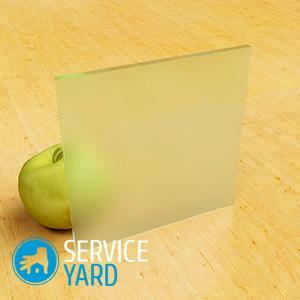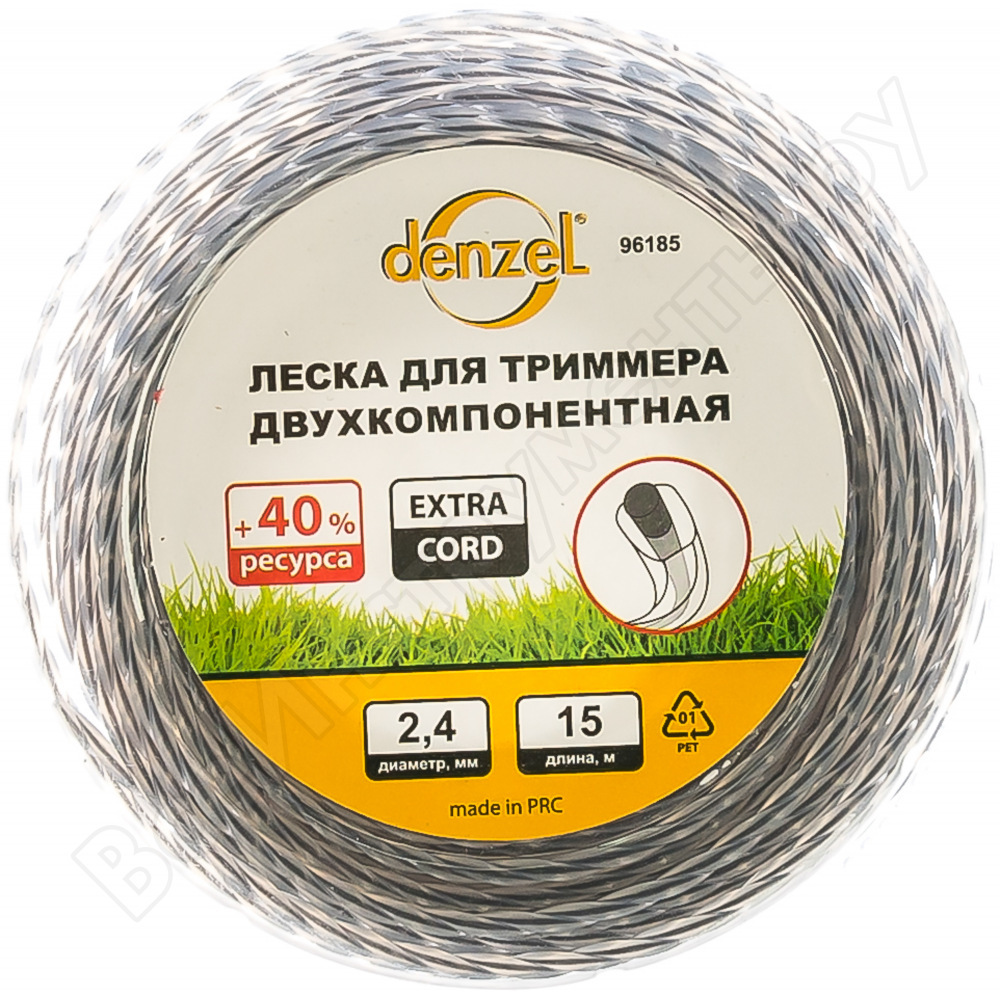
- Why glass?
- What is glass and how is it produced?
- How does the glass get frosted?
- Glass matting at home
- How to wash the frosted glass on the door?
- What items are needed for cleaning?
Modern interior designers offer their customers to use a wide variety of materials for doors. It is not only wood, but also various kinds of plastic, metal, mirror, transparent and frosted glass, exotic materials. Matte glass is perfect for bathrooms, toilets, kitchens. But you need to take care of it carefully. About ways of leaving, and also how to turn a usual glass in matte, we also will talk in this article.
to the contents ↑Why glass?
Glass doors have their advantages in comparison with ordinary wooden doors:
- glass doors do not crumble, do not decay, they do not settle fungus, that is, with careful handling they will serve for a long time;
- they provide reliable noise insulation;
- the room seems lighter than it really is - due to the fact that the light passes even through the opaque glass;
- the room seems bigger than it is;
- glass is completely insensitive to increased humidity;
- this material easily tolerates temperature changes;
- glass is inert, that is, does not enter into chemical reactions with any substances and materials;
- behind the surface is easy to care for;
- frosted glass for doors made of impact-resistant glass, which almost does not beat;
- availability - the price range is great, and a door made of frosted glass can afford a family with any level of income.
Important! Frosted glass fits well with any materials, which allows each owner of the apartment to show their design abilities.
to the contents ↑What is glass and how is it obtained?
Before you start cleaning, you need to find out what the material is and what its properties are. This will help to choose the right detergents and cleaning items. In building stores you can meet glass:
- conventional;
- acrylic.
What are the differences between these two types of material:
- Conventional - is obtained when melting sand. He has an amorphous-crystalline structure. In order that the glass does not beat, during its manufacture, additives are added, as well as dyes.
- Now acrylic glass is becoming more popular. It is made of polymer obtained by artificial means. It is an impact-resistant plastic, it tolerates mechanical effects much better than ordinary glass, and therefore many people prefer it for making doors.
How does the glass become opaque?
Initially, the glass obtained by the melting method is transparent. Matt made it with the help of special treatment. In industry, the following are used:
- sandblasting method;
- etching;
- application of ceramic paints;
- calcining coating.
Determine with the appropriate technology:
- Sandblast treatment is an exclusively mechanical method for which special equipment is required. The glass is exposed to some loose abrasive, which destroys the top layer. Typically, enterprises use aluminum oxide or fractional sand for this purpose. This is a rather complicated method, and it is not used at home.
- Etching is a chemical method. The matte effect is achieved due to the action of chemical reagents on the surface of the material, the most common is hydrofluoric acid. Etching can also be carried out at home, but it is better to use less aggressive and more accessible substances.
- Matting with the help of ceramic paints is a rather simple method, allowing to achieve an excellent effect. This method has only one drawback - the colors are quite expensive, so that the doors can turn out to be "golden".
- Coating application is an effective method, glass remains frosted for many years. But the doors with such coverage are also not cheap.
Glass matting at home
It is possible to make the matt effect yourself. To do this, there are several simple ways - depending on whether you want to get:
- homogeneous frosted glass;
- the patterned glass.
Homogeneous frosted glass
The frosted effect is provided by a special translucent film with a glue core, which can be bought at the building store. You need:
- piece of film, slightly larger than glass surface;
- knife for paper or shoe;
- metal ruler;
- atomizer;
- rubber spatula;
- soap or dishwashing liquid;
- water.
 This method of matting is perhaps the simplest of the existing ones:
This method of matting is perhaps the simplest of the existing ones:
- Measure the glass.
- Put water into the spray gun.
- If the shape of the glass is simple - draw a figure on the back of the film that is exactly the same as the shape of the glass.
- Make on each side the allowances of 5 cm.
- Cut out a fragment - it's best to do a short knife on a metal ruler.
- Degrease glass - for example, simply wash with soapy water, but acetone can also be used if necessary.
- Separate the adhesive layer.
- Dampen the film with water from the spray gun so that it does not stick to where it is not necessary.
- Start attaching the film to the back of the glass. The allowances should go to the profile, and start to glue from above, smoothing the bubbles and creases with a rubber spatula.
- Trim the allowances.
Important! In such a simple way, you can make a pattern, in which some parts are transparent, and others - matte.
Etching
It is possible to glaze glass at home by etching. For this you need:
- special paste( you can make it yourself) or gel;
- cutter;
- soft brush;
- stencil;
- adhesive tape( paint);
- polyethylene.
Important! This method is more suitable for applying a matte pattern than to obtain a uniform surface.
Before starting to etch the door glass, try the paste on another piece of glass, similar in quality. You need to know the time of etching, and it depends on the paste, and on how deep the pattern you want to get. So, how to make frosted glass:
- Make or buy a stencil.
- Wash and dry the surface of the material before treatment.
- The stencil is first superimposed on the carbon paper, and then all this is put on the film( the color layer to it).The entire structure is fastened with adhesive tape.
- Place the stencil out of the self-adhesive film.
- Remove the film parts from fragments that are supposed to remain transparent, all parts of the pattern must fit snugly against the glass.
- Cover the areas where there is no self-adhesive film, polyethylene - the film is fixed with adhesive tape. And the bottom edge of polyethylene should be placed in a bowl, where after the procedure will drain water.
- Pattern cover with a layer of paste for etching.
- After the time specified in the instructions or experimentally is completed, wash the paste with water with a soft brush.
- After the etched area is dry, remove the stencil.
Important! If the size of the picture is greater than the width of the film, overlap the fragments of the stencil so that one oversize the other by 1.5 cm. Cut the stencil with a knife with a short sharp blade.
The most affordable paste
Pasta can be made on the basis of:
- liquid glass;
- hydrofluoric acid.
It is better to use liquid glass:
- Dilute the water glass with distilled water( sold in a pharmacy or in a car dealer).
- Add the tooth powder.
- Stir well.
- Apply paste to desired areas with a velor roller.
- After etching, rinse with warm water.
Engraving
A matte pattern can also be applied by engraving. This is a complex but fascinating process. You need special equipment - abrasive tools.
Important! The procedure is quite long, for engraving you will need a couple of hours of free time, every day. Also need a prepared workplace with good lighting, a table covered with a piece of foam rubber. It is better, of course, to equip the workshop, since engraving is quite dusty.
It will take a long time to learn engraving, but there are some general rules that will be useful to the one who took it for the first time:
- Apply the pattern on the glass with a marker.
- Try to walk along the lines of a bor-machine( like the one that is standing by a dentist) with special pads.
- You can move the burr in one direction only.
How to wash the frosted glass on the door?
So, you put the doors with frosted glass or you made them yourself. Behind them, as well as everything in the house, it is necessary to look after. It's not difficult, but you need to consider some rules.
- The door is made of several materials, and it is necessary to have at hand detergents for each material.
- Movable elements should be lubricated periodically, so as not to creak.
What can I use and what not?
Assortment of detergents in hardware stores is now quite large. You will easily find something that is suitable for washing frosted glass. Pay attention to the means marked "for glass" and "for glass-ceramic surfaces."Suitable for you:
- GT-20( sold in construction stores);
- Mr. Muscle;
- Prill;
- vinegar;
- liquid ammonia;
- medical alcohol;
- acetone;
You will always find the instruction for the store tools on the packaging. But useful substances that are in the medicine cabinet or kitchen cupboard, you need to know how to use:
- Alcohol removes greasy stains, as well as stains from tea and coffee.
- You can simply rub the glass with a touch of alcohol, making regular maintenance, so that the dust sticks out less.
Important! At washing of matte glasses of divorces practically does not happen.
to the contents ↑What items are needed for cleaning?
The frosted glass, of course, is strong, but it can be scratched. Therefore, use only soft cloths and sponges for cleaning:
- suede;
- microfiber;
- flannel.
When cleaning matte glass, it is very important that it does not become transparent. Therefore it is better to wash in a certain order:
- Remove stains - fatty, from tea and coffee, etc.
- Wash the glass with detergent
- Rinse the glass thoroughly.
- Apply a mixture of chalk and water.
- Wipe this glass and allow to dry.
- Remove residues with a soft dry cloth.
Composition for rubbing brushed glass with your own hands
- Pour a glass of water at room temperature into the bowl.
- Add 4-5 spoonfuls of crushed chalk or dental powder.
- Stir well.
- Scratch the glass.
Important! Periodically, the glass should be rubbed with suede.
What should I reject?
Both clear and frosted glass is easily scratched. Therefore, the use of abrasive pastes should be avoided. Glass surfaces are contraindicated:
- acids( except food vinegar, which can be used to remove small stains);
- alkali;
- petrol.
Important! Very carefully we should treat the use of ammonia, which is part of the ammonia. It is necessary to monitor the concentration - not more than a few drops per bucket of water.
Now you know about all the properties of frosted glass, how to make it yourself and how to properly care for interior items with such material. We hope you will appreciate all the advantages of the choice made and care will not be burdensome for you.


